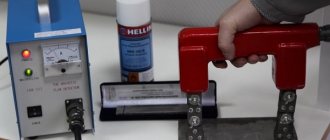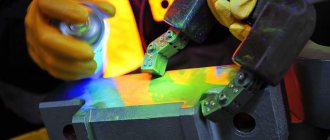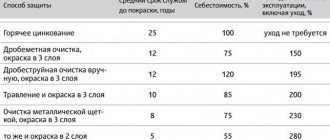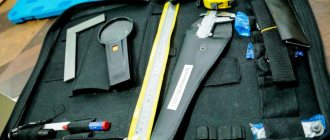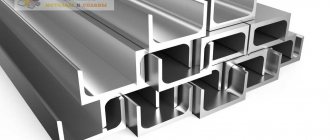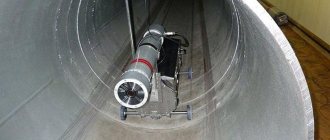Non-destructive testing is a broad group of analysis methods used to inspect, evaluate or test the condition of materials, parts, components, structures, equipment and various equipment without destroying the object being examined.
These are very valuable methods that can significantly save both money and time on object assessment, troubleshooting, various measurements and studies. Non-destructive testing methods can be applied to metals, plastics, ceramics, composites, cermets and various coatings to detect cracks, internal voids, surface cavities, delaminations, weld defects and any other defects that may lead to premature failure of a structure or mechanism. Many non-destructive testing methods are capable of determining defect parameters such as size, shape and orientation.
Review of non-destructive testing methods
The purpose of non-destructive testing is to examine the test object in a safe, reliable and cost-effective manner without damaging the equipment or having to stop the operation of the object. This is contrary to destructive testing, where the part being tested may be damaged or destroyed during the inspection process. Non-destructive testing methods are based on the use of conversion of electromagnetic radiation, sound and other signals using special equipment.
Basic methods of non-destructive testing:
- Ultrasonic method;
- Acoustic method;
- Magnetic particle method (magnetic particle);
- Penetrant control method;
- Eddy current method;
- Vibrodiagnostic method;
- Electrical method;
- Thermal method;
- Radio wave method;
- Radiation method;
- Optical method;
- Visual test method.
Questions for self-control
- What are the main tasks of non-destructive testing?
- Purpose and physical basis of magnetic NC.
- Purpose and physical basis of electrical NDT.
- Purpose and physical basis of eddy current NDT.
- Purpose and physical basis of radio wave NK.
- Purpose and physical basis of thermal NDT.
- Purpose and physical basis of optical ND.
- Purpose and physical basis of radiation NDT.
- Purpose and physical basis of acoustic ND.
- Purpose and physical basis of capillary NK.
Acoustic methods of non-destructive testing
In the acoustic (ultrasonic) method of non-destructive testing, sound waves are used to detect the size and position of defects, which are generated and directed into the material under study using a special piezoelectric transducer and which are reflected from the boundary of the material or defects, if they are present in the material. Next, the reflected waves are recorded and analyzed by the converter, and based on the analyzed information on the device display, a conclusion can be drawn about the presence or absence of defects or deviations.
The acoustic method of non-destructive testing can be used to examine and test almost any material. Ultrasonic flaw detection uses elastic waves in the ultrasonic range (above 20 kHz) and acoustic non-destructive testing is called ultrasonic.
Acoustic non-destructive testing methods include testing using acoustic emission.
Acoustic emissions
Acoustic Emission Testing (AET) is a non-destructive testing technique based on the generation of waves caused by sudden redistribution of stress in a material. When a piece of equipment is subjected to an external influence - a change in pressure, load or temperature - it causes the release of energy in the form of stress waves that propagate to the surface and are recorded by sensors. Detection and analysis of acoustic emission signals can provide information about the presence of discontinuities in a material.
Due to its versatility, the acoustic emission testing method has many applications in various industries such as:
- Assessing the integrity of the object;
- Defect detection;
- Welding quality control;
- Detection of active corrosion at the bottom of various storage tanks;
- Detection of damage in high-energy pipeline systems;
- Inspection of pressure vessels;
- Leak detection.
This method is particularly effective for continuous monitoring of load-bearing structures.
Arion-300 (PF "Arion")
at a price of RUB 506,000.
Pulse X-ray machine Arion-300 from, specializing in the production of X-ray machines for industrial flaw detection. The company is a partner of the Italian company Bosello and the American company Varian, which over the past decades have been leaders in the development of X-ray television systems.
Model features
Weighing 5.1 kg, this portable, portable unit is suitable for quality control of industrial products where high precision defect detection is required. Allows you to identify deep corrosion, determine the location and size of cracks and pores. It is used to examine the seams of gas pipelines, in the aviation industry, in cases where, for technical reasons, the ultrasonic testing method is not applicable.
It has a gas-filled X-ray tube with an anode voltage of 300 kV. The absence of water or oil cooling made it possible to reduce the weight of the device and make it portable. However, this affects the duration of uninterrupted operation. To protect against overheating, an automatic system is installed that operates every 500 pulses. The technological break is 1.5 minutes. The device operates in a temperature range from -35 to +50°C.
The kit includes an 18 Ah battery in a case, a generator, a power supply unit and a control unit, a high-voltage cable and a 220 V power cable, a voltage converter, a charger and a warning lamp.
Everything is packed into a case. Technical characteristics* Arion-300
| Parameter | Meaning |
| Operating voltage at the anode, kV | 300 |
| Translucent steel thickness from a distance of 500 mm, mm | 35-60 |
| Focal spot diameter, mm | 2,3 |
| Power consumption, W | 200 |
| Operating temperature, °C | -35…+50 |
| Dimensions, mm | high-voltage unit – 485×85×115 control panel – 150×255×95 |
| Weight, kg | high-voltage unit - 3.9 control panel - 1.2 |
*See the full list on the official website.
Watch a five-minute video demonstrating the operation of the device in the field:
Magnetic particle non-destructive testing methods
Magnetic particle testing or magnetic particle testing (MT) uses one or more magnetic fields to detect surface or near-surface pores, breaks and cracks in ferromagnetic materials. Using this non-destructive testing method, the metal object being tested is exposed to a strong magnetic field. The magnetic field can be applied with a permanent magnet or an electromagnet. When using an electromagnet, the field is present only when current is applied.
Since magnetic flux lines do not move well in air, the magnetic field is concentrated at the edges of pores and cracks and causes the attraction of very small colored ferromagnetic particles, which are deposited on the surface of the object. After the termination of the magnetic field, a concentration of these particles will be observed at the edges of breaks and pores, producing a visible indication of the location of the defect on the surface of the part. Magnetic particles can be dry powder or a liquid solution of magnetic powder, or they can be colored or fluorescent dye that fluoresces under ultraviolet light. To identify all defects, 2 checks are carried out - the first is perpendicular to the surface, the second is oriented 90 degrees to the first position.
Capillary
Surface and through defects are easily detected using a simple and effective NDT method. Its essence lies in the capillary staining of the white surface of the product with a colored penetrant, obtained by treating it with a developer. After applying the developer, the penetrant appears on the surface in places of discontinuities, cracks, lack of fusion, and folds. Defect zones contrast with the rest of the background and are easily distinguished.
A significant disadvantage of the method is the toxicity of the chemicals, which places special demands on forced ventilation of the flaw detector's workplace, as well as the correct use of personal protective equipment. Through defects are detected in other ways.
offers laboratories and enterprises using the capillary method in their activities:
- colored and luminescent penetrants;
- developers, incl. low temperature;
- aerosol cleaners.
The method is effective, simple and relatively inexpensive, which is why it is popular.
Methods of non-destructive testing with penetrant substances
Liquid penetrant testing is an effective tool for evaluating the surfaces of welds, castings and other components that cannot be disassembled or destroyed. In addition to checking for cracks and pores, it can also be used to determine other surface characteristics such as porosity. Non-destructive penetrant testing has long been one of the most reliable, effective and cost-effective methods for detecting surface defects in non-porous materials.
The basic principle of liquid penetration testing is that when a very special liquid (penetrant) is applied to the surface of a part, it penetrates into open cracks and voids in the surface. After applying the liquid dye and ensuring proper dwell time, some of the liquid is cleared and the developing powder is applied. The inspector who conducts the analysis extracts liquid that seeps into cracks or pores, resulting in visible marks that identify defects.
When performing a penetrant inspection, it is important that the surface being tested is clean and free of any foreign materials or liquids that could block the penetrant from penetrating into open voids or cracks.
Spotcheck SK3 (MAGNAFLUX)
at a price of 15,000 rubles.
Magnaflux is the largest manufacturer of consumables for penetrant and magnetic particle testing. The Spotcheck SK3 kit is the most popular solution from the manufacturer for identifying surface defects on products made of any non-porous materials.
Model features
The Spotcheck SK3 penetrant testing kit is used at the next stage after visual inspection of examining the surface of metal products and welds. This is a consumable kit that includes a cleaner, a penetrant liquid and a developer. It allows you to identify microcracks that are invisible under normal conditions, without resorting to the use of expensive equipment.
To use such NDT, careful preparation of the surface of the part being tested, removal of paintwork, and degreasing are required.
The method allows you to detect only external defects with an opening width of 0.2-0.5 microns. Specifications Spotcheck SK3
| Parameter | Meaning |
| Package | penetrant – aerosol 2x400 ml; developer – canisters 4x5 l; cleaner – aerosol 3x400 ml |
| Color | penetrant – dark red; developer – white; cleaner – transparent |
| Operating temperature, °C | 5-50 |
Watch a promotional video demonstrating the penetrant testing kit:
Eddy current testing methods
Eddy current testing is an effective and accurate method. The eddy current testing method is based on the analysis of the interaction of the electromagnetic field of the eddy current transducer with the electromagnetic field of eddy currents passing through the test sample.
Eddy currents can be used to detect cracks, measure material or coating thickness, measure conductivity for material identification, and control heat treatment. Eddy current techniques are commonly used for nondestructive testing and condition monitoring of a wide variety of metal structures, including heat exchanger tubes, aircraft fuselages, and aircraft structural components.
The advantages of eddy current testing include:
- Sensitivity to small cracks and other defects;
- Ability to detect surface and near-surface defects,
- Online results;
- Portable compact equipment;
- Wide range of uses;
- Minimal preparation of parts;
- No need for contact with the part being tested (gap up to 2mm);
- The ability to check complex shapes and sizes of the object under study.
Features of the structure and operation of microhardness testers
An efficient and accurate instrument for determining Vickers hardness. This is the optimal ratio of quality and price.
Digital microhardness testers are presented, as well as hardness testers operating on the Brinell and Rockwell scales.
The standard microhardness tester system includes:
- digital lens;
- LCD screen;
- operating system with a simple and intuitive interface;
- automatic starting lever;
- automated load application;
- positioning table;
- built-in PC.
When working with a microhardness tester, the operator can independently select the parameters. Information about all studies is saved in the computer’s memory and can be printed if necessary.
Hardness values are automatically converted to other scales.
Electrical non-destructive testing methods
Electrical methods of non-destructive testing are based on recording the indicators of the electric field interacting with the object under study or arising in the controlled object as a result of third-party influence. The electrical method of non-destructive testing allows you to determine some characteristics of the material: density, degree of polymerization, thickness of materials and coatings.
Radio wave
The radio wave method is used for products made from materials that conduct radio waves - dielectric, semiconductor, composites. The object under study is exposed to radio frequency radiation, and based on the results of measurements of the amplitude, phase or polarization characteristics of the reflected or scattered electromagnetic wave passing through the controlled object made of plastic, technical rubber, composite, the homogeneity, dimensions and shape of the product, the presence of unacceptable inclusions, low-quality welded and adhesive joints, etc.
To carry out technical control and carry out measurements of individual characteristics, the following are produced from radiotransparent materials:
- radio wave flaw detectors that detect and record the lack of continuity and homogeneity in products;
- radio wave thickness gauges designed to measure the thickness of products;
- radio wave structuroscope, which determines the characteristics of the structure of the product.
Other radio wave instruments are also produced that determine humidity, dielectric characteristics, and density of the objects under study.
Thermal method of non-destructive testing
Thermal/infrared testing is used to measure or display surface temperature based on the infrared radiation emitted by an object as heat passes through or out of that object. Most infrared radiation is longer wavelength than visible light, but can be detected using thermal imaging devices (thermal cameras) called "infrared cameras." For accurate IR testing, the part being tested must be in direct line of sight to the camera and should not be covered by foreign objects or a cover, as covers will dissipate heat and may cause false readings. When used correctly, thermal imaging can be used to detect corrosion damage, deposits, voids, inclusions, and many other defects and abnormalities.
Radiation methods of non-destructive testing
Radiographic testing (RT) is a non-destructive testing method that involves using either X-rays or gamma rays to view the internal structure of a component. In the petrochemical industry, radiographic testing is often used to inspect machinery such as pressure vessels and valves to detect defects. Radiographic testing is also used to check the quality of welds.
Compared to other methods, non-destructive quality control using radiography has several advantages.
- The method can be used on various materials;
- The collected data can be stored for later analysis.
Radiography is an effective tool that requires very little surface preparation. Many radiographic systems are compact and self-powered, allowing them to be used in the field.
Types of radiography
There are various types of non-destructive testing by radiography, including conventional radiography and multiple forms of digital radiographic testing. All of these types of non-destructive testing work differently and have their own set of advantages and disadvantages.
- Conventional radiography. Conventional radiography uses a sensitive film that reacts to radiation from an object to capture an image of the part being tested. This image can then be checked for damage or imperfections. The biggest limitation of this method is that films can only be used once and take a long time to process and interpret.
- Digital radiography. Unlike conventional radiography, digital radiography technology does not require film. Instead, it uses a digital detector to display radiographic images on a computer screen almost instantly. This allows exposure times to be significantly reduced so that images can be interpreted more quickly. Digital images are significantly higher quality than conventional radiographic images. Thanks to its high-quality imaging capabilities, the technology can be used to identify material defects, foreign objects in a structure, examine the quality of welds, and test items for corrosion under insulation.
UD2-70 (NPK "LUCH")
at a price of RUB 247,000.
In 2014, NPK Luch released the fourth generation UD2-70, which indicates the demand and constant improvement of this model. What remains from past developments is the aluminum body, ease of learning and use of the device.
Model features
The device is designed for NDT of metal, polymer and composite products for deviations in the homogeneity of the material structure and violation of its continuity. The model allows you to determine the location of the defect and is suitable for studying finished products and welds.
The device is lightweight - only 2.2 kg. At the same time, it comes in a rugged case with a degree of protection IP64. In the previous version there were problems with the durability of the handle, now they have been corrected - the reliability of the design has been increased.
In the new version, the battery is removable and to replace it you only need to unscrew 4 screws. Continuous operation time is 14 hours. There is a network connection. The keyboard has also been changed, now it has a more strict appearance.
When ordering equipment, it is possible to purchase a version with ARD diagrams. Work is carried out with two independent ASD strobes. The built-in memory allows you to store 400 settings and Type A scan images, as well as 4000 depth gauge values.
In addition to the general purpose version, the manufacturer offers “locomotive”, “carriage”, “metro TR-2” and “metro TR-3” versions with expanded equipment to increase the efficiency of specific work.
Technical characteristics* UD2-70
| Parameter | Meaning |
| Operating frequencies, MHz | 0,4; 1,25; 1,8; 2,5; 5; 10 |
| Depth of inspection for steel, mm | 1-7500 |
| Speed of ultrasonic vibrations, m/s | 100-15000 |
| Gain adjustment, dB | 0-100 in steps of 0.5 and 1 |
| Temporary sensitivity adjustment, dB | 0-80 |
| Cut-off function | linear up to 100% display height |
| Sweep type | A, B |
| Distance measurement accuracy, mm | 0,1 |
| Screen size, mm | 111,4×83,5 |
| Operating temperatures, °C | -10…+50 |
| Dimensions, mm | 245×77×145 |
| Weight, kg | 2,2 |
*See the full list on the official website.
Watch a short video review of this ultrasonic flaw detector:
Visual and optical testing as methods of non-destructive testing
Visual testing is the most commonly used testing method in industry. Because most testing methods require the operator to look at the surface of the part being tested, visual inspection is inherent in most other testing methods. As the name suggests, visual inspection involves visual observation of the surface of the object being examined to assess the presence of visible defects and deviations. Visual inspections may be performed by direct vision inspection or may be enhanced by the use of optical instruments such as magnifying glasses, mirrors, borescopes, video endoscopes, and computer viewing systems.
A portable video surveillance unit with zoom allows you to inspect large tanks and ships, railway tanks, and sewer lines. Robotic scanners allow surveillance in hazardous areas such as air ducts, reactors, and pipelines. Corrosion, misalignment of parts, physical breaks and cracks are just some of the defects that can be detected using visual and optical testing technology.
Comparison of non-destructive testing methods
No single NDT method will work for all defect detection or measurement applications. Each method has advantages and disadvantages compared to other methods. The table below summarizes the main types of non-destructive testing, common applications, and the advantages and disadvantages of some of the most commonly used non-destructive testing methods.
| Methods of non-destructive testing with penetrant substances | Magnetic non-destructive testing methods | Acoustic methods of non-destructive testing | Eddy current non-destructive testing methods | Radiation methods of non-destructive testing | |
| Main Use | |||||
| Used to detect cracks, porosity and other defects that are on the surface of a material and have sufficient volume to fill and retain the penetrating material. | Used to test ferromagnetic materials (those that can be magnetized) for defects that result in a transition in the material's magnetic permeability. Magnetic particle inspection can detect surface defects | Used to detect surface and internal defects in many materials, including metals and plastics. Ultrasonic testing is also used to measure the thickness of materials and in other cases characterizes material properties based on sound speed and attenuation measurements. | Used to detect surface and near-surface defects in conductive materials such as metals. Eddy current testing also measures the thickness of thin sheets of metal and non-conductive coatings such as paint. | Used to test almost any material for internal defects. X-rays can also be used to detect and measure internal characteristics, confirm the location of hidden parts in an assembly, and measure the thickness of materials. | |
| Main advantages | |||||
| Large surface areas or large volumes of parts/materials can be inspected quickly and inexpensively. Parts with complex geometries are inspected regularly. Readings are taken directly on the surface of the part, providing a visual image of the break. Investment in equipment is minimal. | Large surfaces of complex parts can be inspected quickly. Can detect surface and near-surface defects. Magnetic particle readings are made directly on the surface of the part and form an image of the fracture. The cost of the equipment is relatively low. | Penetration depth for defect detection or measurement is superior to other methods. Only one-way access is required. Provides information about the depth of the defect. Part preparation required. The method can be used for much more than just detecting defects. | Detects surface defects. The sensor does not need to be in contact with the workpiece. The method can be used to detect various defects. Minimal preparation of the part is required. | Can be used to test almost all materials. Detects hidden internal defects. Ability to test complex shapes and multi-layer structures without disassembly. Minimal preparation of the part is required. | |
| Flaws | |||||
| The method detects only surface fracture defects. Surface preparation is critical as contaminants can mask defects. A relatively smooth and non-porous surface is required. | Only ferromagnetic materials can be tested. Correct alignment of the magnetic field and the defect is critical. Large currents are needed for very large parts. A relatively smooth surface is required. | The surface must be accessible to the probe and coupling. Surface and roughness may interfere with testing. Linear defects oriented parallel to the sound beam may go undetected. | Only conductive materials can be tested. Ferromagnetic materials require special treatment to eliminate magnetic permeability. Penetration depth is limited. Flaws that lie parallel to the direction of the inspection probe coil winding may go undetected. | Instruments and methods of non-destructive testing using radiography require good training. Typically, access to both sides of the structure is required. The orientation of the radiation beam towards volumetric defects is critical. A relatively expensive investment in equipment is required. Possible radiation hazard to personnel. | |
Our company provides all the necessary equipment and instruments for conducting a full cycle of object research using non-destructive testing methods, which you can buy or rent at a favorable price.
Qualified managers are always ready to help you choose equipment for non-destructive testing that is optimally suited to your tasks.
Return to list
Scope of application
Power elements of structures experience large static and dynamic loads. This leads to the occurrence of fatigue cracks and subsequent destruction of parts. Timely detection of cracks and other defects helps prevent emergency failure of a part of a structure, one of the components or an entire unit. The use of flaw detection methods is one of the few options for solving this problem.
Depending on the technology for determining defects, visual-optical, ultrasonic, X-ray, capillary, magnetic particle, and eddy current flaw detection methods are used.
Types of flaw detectors
| Method | When to use | Principle of operation | Peculiarities |
| Ultrasonic testing (UT) | Used for inspection of welds, pipes, beams, rails, and other cast and composite structures. Allows you to detect cracks, sunsets, pores, looseness and other discontinuities on the surface or in the depths of parts made of metal, plastic and other materials. | Ultrasonic vibrations propagate into the part in the form of a directed beam. The vibrations reflected from the defect lead to the appearance of an intermediate pulse on the flaw detector screen. |
|
| Radiographic | Allows you to detect defects in welded and soldered seams, cracks, pores, deep corrosion, as well as damage to the structure of the material that occurs during machining. | It is based on exposing a part to x-rays and obtaining an image of the internal structure on film or digitally on a display. Allows you to identify the shape and exact dimensions of the defect. |
|
| Eddy current | This method detects cracks, intergranular corrosion, and inclusions of foreign metals at a depth of up to 2 mm without the need to remove the coating. | To excite eddy currents, a sensor with an inductance coil inside is used. The alternating current passing through its winding forms an alternating magnetic field in space. Penetrating inside the part, it excites eddy currents. Using a flaw detector, the eddy current parameter is converted into an observable signal. |
|
| Capillary | To detect invisible defects on the surface of parts made of aluminum, magnesium, titanium or nickel alloys and steel, subject to prior removal of the coating and thorough surface preparation. | Based on the use of the property of a liquid to wet a solid under the action of capillary pressure and fill narrow cracks and small holes. A penetrating liquid (penetrant) is applied to the test area, removed, and then a developer composition is used, against which the area with the defect becomes visually noticeable. |
|
| Magnetic particle | To control parts and assemblies directly in the structure, without the need to dismantle them. It is used at repair plants to detect cracks that are invisible during visual inspection. | The metal part is magnetized using a magnetic flaw detector. A stray field appears above the defects, which reveals itself when parts are processed with ferromagnetic particles in a liquid or gas mixture. The presence and location of cracks are judged from the indicator pattern. |
|
* There are dozens of NDT methods; we consider the most popular solutions.
Summary table of flaw detector models
| Model | Peculiarities | Equipment | Approximate price |
| 1. Ultrasonic device UD2-70 (NPK “LUCH”, Russian Federation) |
|
| RUB 247,000 |
| 2. Ultrasonic device USM-Go+ (GE Sensing & Inspection Technologies, USA) |
|
| 370,000 rub. |
| 3. Ultrasonic device Isonic 2010 (Sonotron NDT, Israel) |
|
| RUB 1,670,000 |
| 4. X-ray apparatus Arion-300 (PF “Arion”, Russian Federation) |
|
| 506,000 rub. |
| 5. X-ray machine Mart-250 (Spectroflash LLC, RF) |
|
| 695,000 rub. |
| 6. Eddy current device Vector-50 (NPC “Kropus”, Russian Federation) |
|
| 280,000 rub. |
| 7. Eddy current device VD-70 (NPK “Luch”, Russian Federation) |
|
| 220,000 rub. |
| 8. Set for penetrant testing Spotcheck SK3 (MAGNAFLUX, UK) |
|
| 15,000 rub. |
| 9. Device for magnetic particle testing Magnaflux Y1 (Magnaflux, UK) |
|
| 94,000 rub. |
